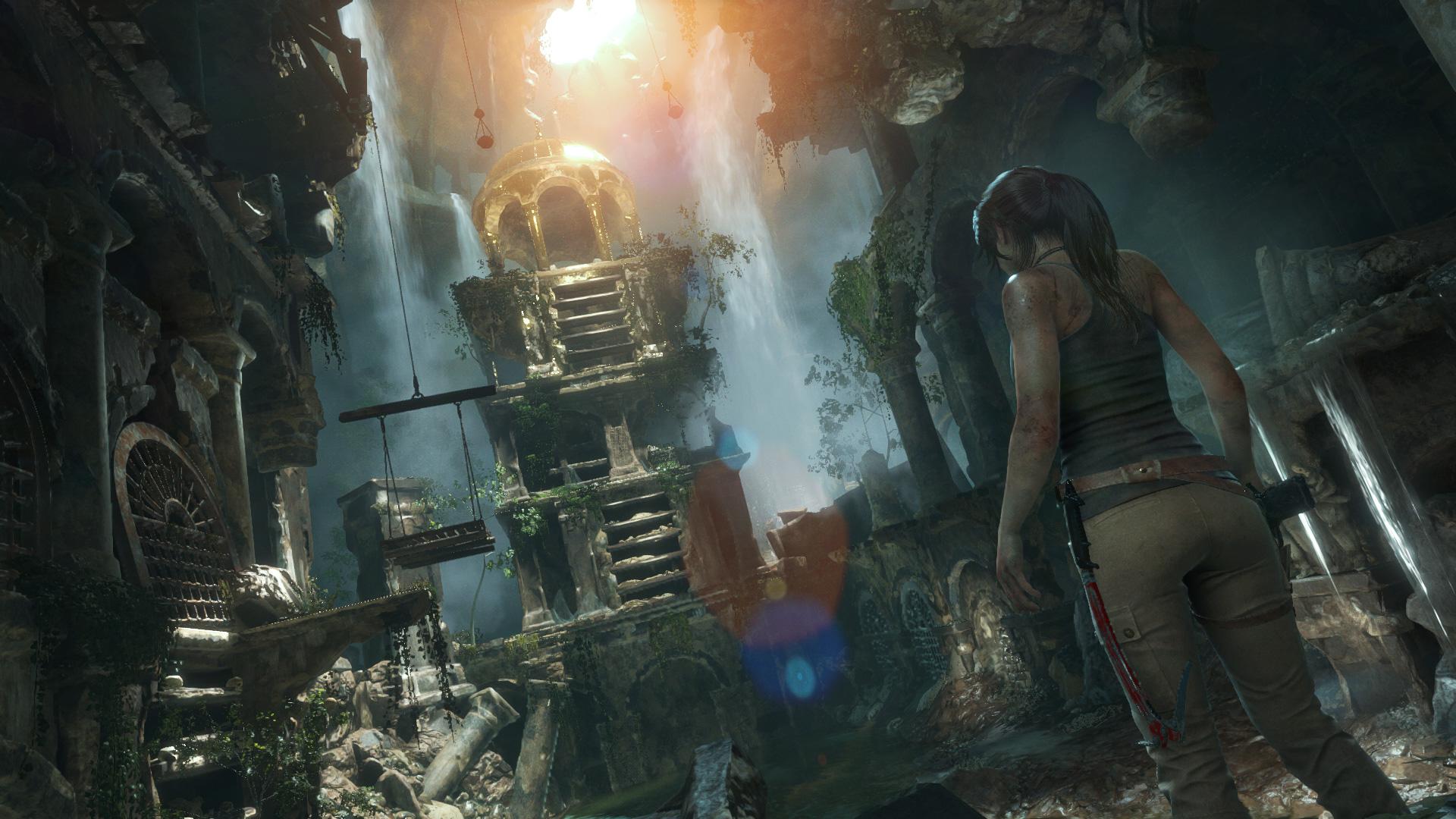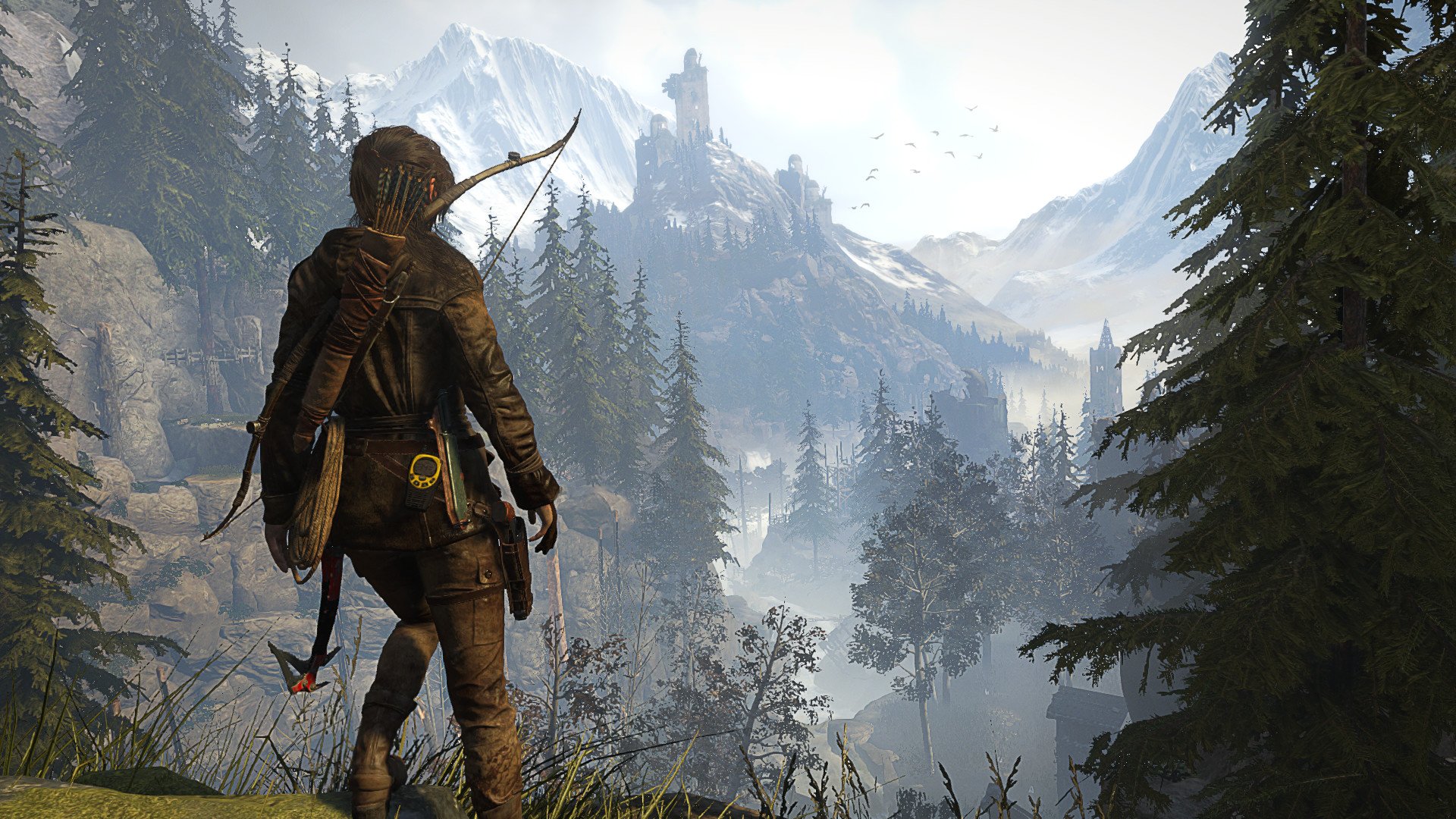Rise of the Tomb Raider spotlights Xbox One X power — and potential
Rise of the Tomb Raider is seeing some major upgrades this fall, and it's shaping up to be a must-buy on Xbox One X.

Rise of the Tomb Raider first debuted on the Xbox One in late 2015, marketed as a timed-exclusive following a publishing deal with Microsoft. Building on the events on the franchise's reboot two years prior, the new game continues Lara's adventures through a cinematic single-player adventure while combating the forces of the evil "Trinity" organization.
Even today, Rise of the Tomb Raider stands out on console, simply for its graphical achievements. However, as recently announced by the game's current publisher, Rise of the Tomb Raider is set to see a further upgrade on the platform later this fall to take advantage of the upcoming Xbox One X. And, wow, is it beautiful.
Putting choice in the hands of the player
Rise of the Tomb Raider for Xbox One was originally developed by Crystal Dynamics, a studio rooted deeply into the Tomb Raider franchise. This time around, with visual upgrades almost entirely on a technical level, the work was shifted over to a small Dutch studio named "Nixxes Software." With the company having previously developed an Xbox 360 back-port and PlayStation 4 (PS4) re-release, the team is far from new to the game.
Nixxes has taken an interesting approach to Rise of the Tomb Raider's update for Xbox One X, providing flexibility for the end user, based on their preferences. Although many games are offering fixed resolutions and frame rates in pursuit of this year's buzzword, "native 4K," Rise of the Tomb Raider allows players to choose one of three display modes.
Rise of the Tomb Raider allows players to choose one of three display modes.
Choosing between visual settings is relatively common for PC games, but on consoles, developers frequently pursue a single display mode tailored specifically for the console's hardware. With the Xbox One X assumedly unable to output 4K at 60 frames per second (FPS) in this instance, three modes allow priorities of the additional resources to shift through a simple menu option. However, unlike the game's PC counterpart, granular changes such as anti-aliasing tweaks and texture options, are obscured, maintaining a level of curation expected from a console.
We had the chance to play through Rise of the Tomb Raider's "The Prophet's Tomb" level for an idea of how the game runs on Xbox One X across these three modes. Although one of the least demanding sections of the game, provided a look into how the game implements each of the three modes and how they hold up on a 4K display.

Which mode is best for you?
The first of these modes offers "4K Enriched Visuals," promising an output at 4K resolution while offering various visual improvements. Utilizing scaling techniques, the game manages to maintain a high resolution close to true 4K, while sporting additional effects that improve rendering across the board. Based on details provided prior to launch, players can expect improvements in lighting, reflections, and foliage, alongside jumps in polygonal detail and texture filtering.
All the latest news, reviews, and guides for Windows and Xbox diehards.
What does all this mean? You won't see the precision of native 4K, but from our experience, that won't make much of a difference. Additional enhancements add polish to an already stunning game, with a compromise that's not hugely noticeable (especially when playing on a TV from a distance.) Personally, I found this was my favorite way to experience Rise of the Tomb Raider on Xbox One X, blending together a high resolution and some visible visual changes. While this mode outputs at 30 FPS, due to the nature of its gameplay, this didn't feel rough at any time.
A great example of Xbox One X's potential, showing how a developer can take advantage of additional resources.
"Native 4K" renders the game at a consistent resolution of 3,840 by 2,160 pixels, although it drops the other visual effects. Delivering true 4K, this provides the sharpest possible image, while targeting 30 FPS. If you've recently picked up a 4K TV, the mode would be a great way to get the most in terms of clarity, while still receiving an experience close to the original Xbox One release.
You won't be seeing any downgrades from the original selecting this mode. However, with Enriched Visuals offering more visual effects, this won't be the most realistic either. Paired with the added support for high dynamic range (HDR) the native 4K mode does shine, but when other "faux-4K" techniques, such as dynamic scaling, can produce similar results, the "4K Enriched Visuals" mode should be more impressive for the average gamer.

Finally, Rise of the Tomb Raider will also offer a "High Framerate" mode on Xbox One X, which attempts to output 60 FPS at the cost of resolution. Rendering at 1080p, this mode will be the least visually impressive but has the potential to almost double the outputted frames in some locations. For those who value gameplay and fluidity over visuals, this is the mode to consider.
In the time spent with Rise of the Tomb Raider running at 60 FPS, gameplay felt significantly smoother and more responsive. Speeding up scenes and adding a new level of fluidity, the game feels very different – almost jarring after spending time with previous 30 FPS modes. This change is a significant departure from the original Xbox One release but only shows the appeal of a high frame rate in an action-oriented title.

Summing that all up ...
Rise of the Tomb Raider is a great example of Xbox One X's potential, showing how a developer can take advantage of additional resources to deliver a range of enhancements to gamers. Microsoft's marketing might focus on 4K resolutions and HDR implementation, though when given the choice, interchangeable modes is an outstanding approach to delivering graphical upgrades for the console.
We've only seen a small slice of the game, and we'll have to wait until November 7 to see how Rise of the Tomb Raider performs on retail Xbox One consoles. However, even in its current state, the update is looking promising – especially as a free update for existing users. Offering variety to players goes a long way, and provided performance is comparable in the final release, the game is one to try on Xbox One X launch.

Matt Brown was formerly a Windows Central's Senior Editor, Xbox & PC, at Future. Following over seven years of professional consumer technology and gaming coverage, he’s focused on the world of Microsoft's gaming efforts. You can follow him on Twitter @mattjbrown.
